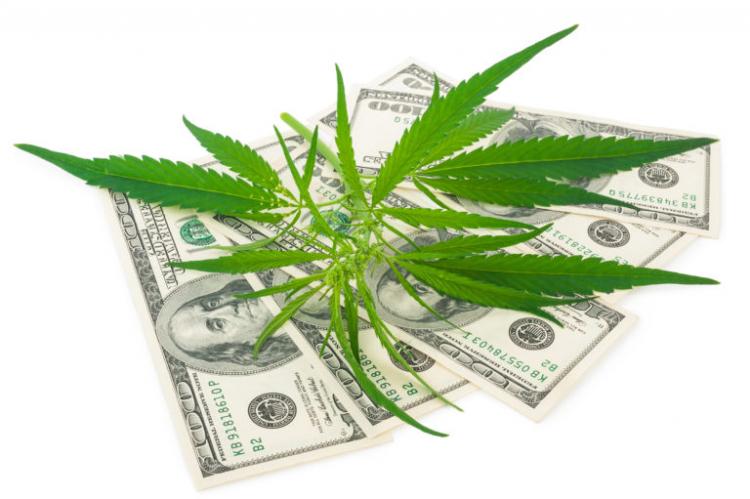Global Cannabis Revenue Pushed by Sales Doubling in Some U.S. States
The green rush in the global cannabis market continued in 2019, with sales doubling in seven U.S. states as well as Canada, and you can expect that trend to continue this year, a report out on Thursday shows.
The report from Arcview Market Research and BDS Analytics shows global cannabis sales rose 48% to $15 billion in 2019.
The figures, which are still preliminary and may get revised as more data comes in, were bolstered by states where cannabis has recently become legal for adult or medicinal use.
The seven states where sales were doubled or more from 2018 to 2019 were:
Florida (174%) $241 million to $660 million; Maryland (129%) $111 million to $255 million; Massachusetts (210%) $217 million to $672 million; New Jersey (100%) $53 million to $107 million; New York (274%) $39 million to $144 million; Oklahoma (34,606%) $1 million to $346 million; and Pennsylvania (158%) $124 million to $310 million.
Canada saw sales grow 229%, from $582 million to $1.9 billion year-over-year, the report shows.
Oklahoma’s 34,606% growth last year is not a typo.
Oklahoma voters soundly approved a medical marijuana referendum in late 2018, however the state government stepped in with numerous restrictions, including banning smokable marijuana products at dispensaries and requiring licensed pharmacists to be on-site at dispensaries.
Courts ended up overturning the regulations, and have largely slapped down efforts by local jurisdictions to further regulate licensed cannabis use, paving the way for easier access in the state.
The state’s medical marijuana program went forward in 2019 with gusto. The list of medical dispensaries in Oklahoma has grown to 133 pages and counting, and an estimated 7% of the state’s adult residents now hold a medical marijuana license.
“That’s been really rare,” said Tom Adams, managing director and principal analyst at BDS Analytics. “Most states have loaded their programs up with so many restrictions.”
Restrictions are particularly copious in medical states, with strict limits on what medical issues can be treated with cannabis, in what circumstances it may be prescribed, in what forms in can be taken, and these restrictions are often accompanied by expensive licensing processes that can cost companies in excess of $100,000.
Restrictions and taxes are the primary impediments to sales growth in both medical and adult-use states.
California, for example, is often called out for having a heavy tax burden on cannabis with numerous regulations.
The state’s cannabis industry includes more than 20 license types and four regulatory agencies, while a 15% excise tax and 9.25% cultivation tax help keep prices high and funnel people into the illicit market.
The state’s legal market represents just over 54% of the overall cannabis spending in the state, compared with states like Colorado, Oregon and Washington, which are all on track to shrink the illicit sales percentage to 30% or less of spending by 2024, according to the BDS data.
California’s market was $3 billion in 2017, when it was a loosely regulated medical state. When legal adult use began on January 2018 and stores were required to be licensed, legal sales fell to $2.5 billion.
The state saw some growth in 2019, with sales reaching $2.96 billion, the report shows.
“It’s recovering,” Adams said.
He expects “continued modest growth” for California.
Cannabis sales in California are expected to grow from $2.96 billion to $3.6 billion for 2020.
“It is sort of getting its feet under itself adjusting to its situation,” Adams said.
Perhaps as interesting as last year’s explosive growth was that the growth came amid a fallout in public market valuations, with the stock of numerous public cannabis companies sinking throughout the year.
How does that happen?
“Wall Street often gets is wrong,” Adams said. “Wall Street tends to get overexcited and over-depressed.”
The market was over-excited about cannabis early on, and that excitement peaked around April 2019, Adams noted.
During the market run up, legal adult-use sales had begun in Canada. However, supplies to dispensaries were tight and kept prices at dispensaries high, and it became clear that not enough stores would open quickly enough to meet the demand, so it seemed unlikely that early sales projections for the nation would be met.
Another whammy hit the public cannabis market when it became clear that California was overtaxed and overregulated, and that sales would fall far from expectations.
“A lot of air went out of the balloon over cannabis,” Adams said.
That was the set up for an interesting dichotomy between actual cannabis sales and stock market interest in cannabis: cannabis sales grew 17% in 2018, when stocks were rising; then cannabis stocks collapsed in 2019, while sales saw 48% growth.
“It’s really just the crowd mentality on Wall Street – too bullish in 2018 and too bearish in 2019,” Adams said.
Among the other key points in the report:
- Sales in 2020 are forecast to increase by 38% driven by growth in established markets and continued geographic expansion, including Illinois’ recreational market opening;
- Despite medical spending outgrowing adult-use spending in 2019, adult-use markets will be the primary drivers of global market growth through 2024;
- More than $400 million in Massachusetts adult use sales in the first year of an adult use East Coast market.
What’s all this cannabis sector growth mean for the insurance sector?
“Growth is spectacular,” Adams answered.
Global cannabis revenue for 2020 is expected to grow to $20.9 billion, and by 2024 it’s estimated the global cannabis market will reach $42.7 billion.
Farms to grow cannabis, warehouses to store it, a vast distribution pipeline, retail shops on more and more corners – they all need insurance, Adams noted.
“Given all that’s involved in the physical distribution of cannabis, I got to believe it’s an extraordinarily big opportunity for insurance,” Adams said.
- Log in to post comments

